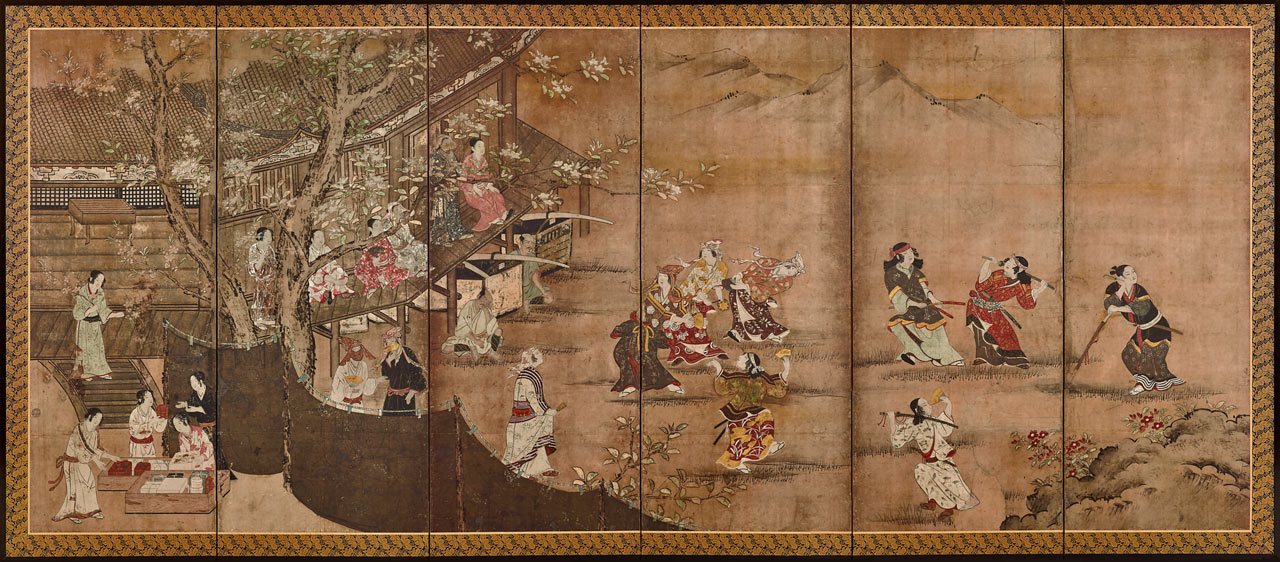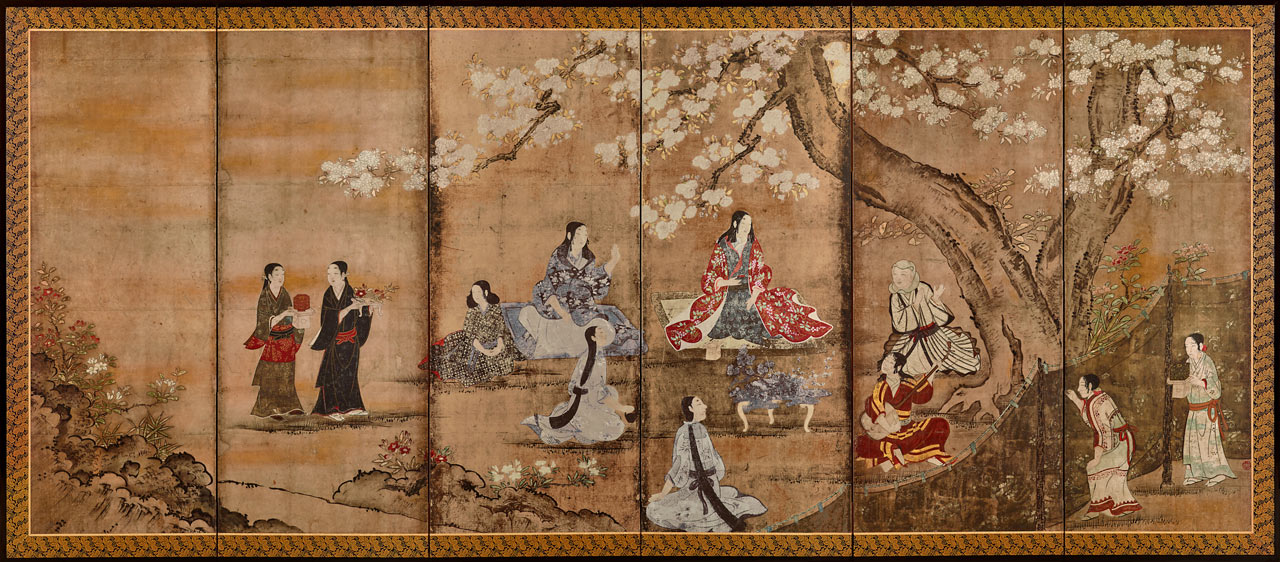Amusements under the Blossoms
DATA
- Artist:
- Kano Naganobu
- Historical era:
- Edo (17th century)
- Material:
- printed on washi paper
- Medium:
- pair of six-fold screens
- Size:
- Each screen H148.6 x W355.8cm
[Original]
- Current owner:
- Tokyo National Museum
- Material:
- ink on washi paper
DESCRIPTION
The right screen of Amusements under the Blossoms depicts a festive party scene featuring a group
of noblewomen beneath double-petaled cherry trees (J. yaezakura) in full bloom. On the left
screen, aristocratic figures, seated in an octagonal building beneath blossoming aronia (J.
kaidô) trees, watch a performance of the stylish fûryû odori (literally, "wind-flowing dance").
Particularly striking in this scene are the dancers garbed in beautiful robes and bent at the
waist. The four women with swords at the far right of the left screen are thought to be
performing the fashionable dance known as Okuni Kabuki. The figures are relatively large in
relation to the painting as a whole, and the painter was clearly most interested in the figures
and their enjoyment of the splendors of spring. It was from this focus on human activity that
the outstanding genre paintings (J. fûzokuga) of the Kan'ei era (1624-44) developed.
Certain
features of the background setting-such as the dependence on ink painting techniques rather than
the lavish color and gold then popular in screen painting, and the compositional device of
framing the entire scene with large trees placed at either end-suggest an old-fashioned mode of
expression. According to the seal, the artist was Naganobu (1577-1654), the youngest brother of
Kano Eitoku (1543-90), and although the painting's exact date of execution is unknown, it is
believed to have been done some time in the 1610s. Previously, the painting was owned by the
Meiji period (1868-1912) industrialist Hara Rokurô. It was being restored in 1923 (Taishô 12)
when the Great Kantô Earthquake struck, and the two middle panels of the right screen were lost
to fire. -Cited from e-Museum


